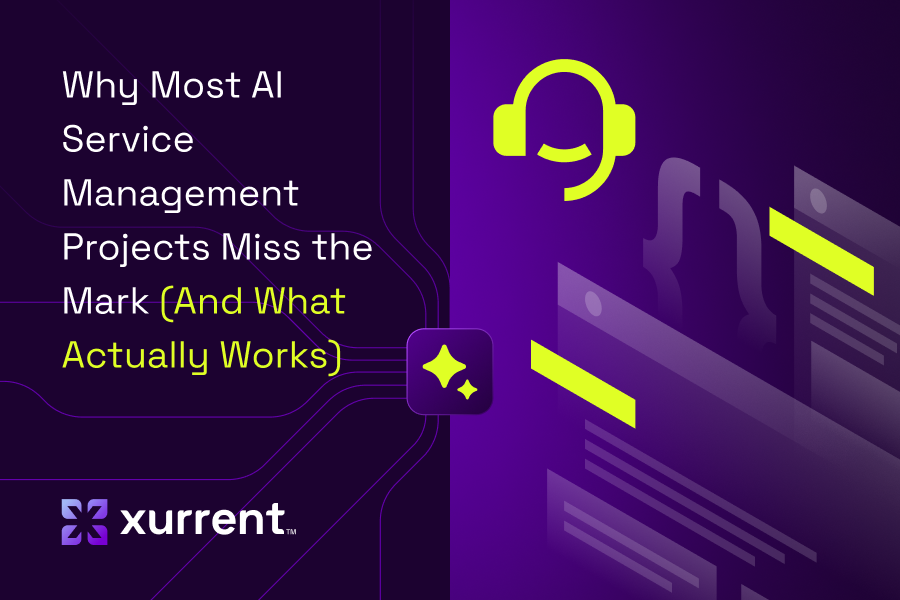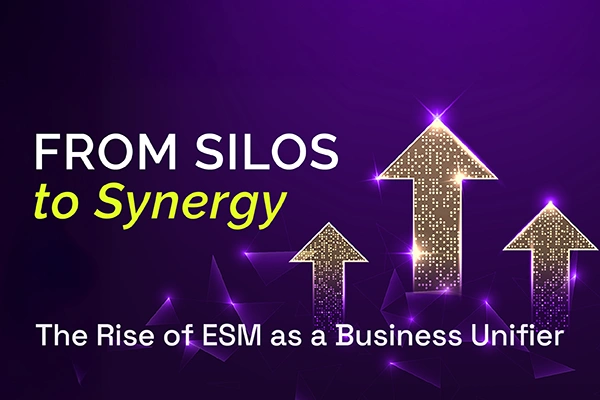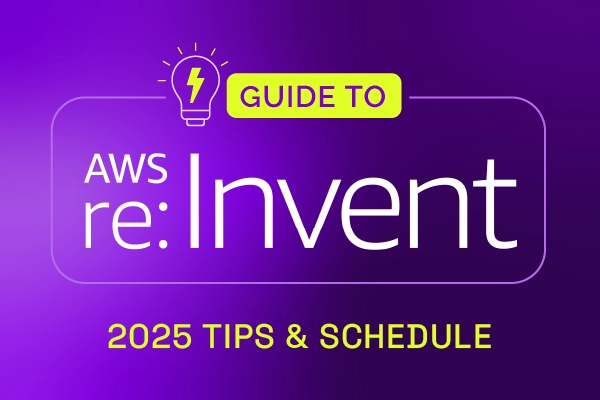4 proven strategies to transform your Service Desk into a productivity enabler
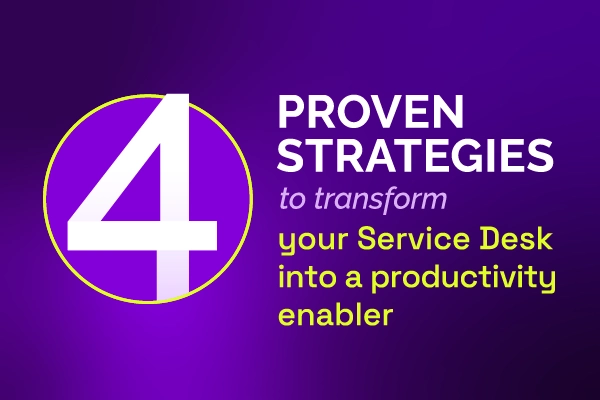
FACT: User expectations are on the rise.
FACT: IT ecosystems are growing more complex.
FACT: Technology continues to advance exponentially (See AI)
FACT: Traditional ticket-based service desk models fall short
Which means ... service desks must evolve to become proactive, experience-driven enablers of productivity.
In our most recent edition of SMU (Service Management Unlocked), Jim Hirschauer, Xurrent's Head of Product Marketing, and Eric Warth, our Senior Solutions Consultant, explored practical strategies for modernizing the service desk to deliver faster, more seamless support.
Below is a short recap.
Rather just watch the full webinar? Sure. Here is the link.
It's time to modernize the service desk
But how? Simple. Ensure it's:
- Proactive, intelligent, and integrated
- A productivity enabler, not a bottleneck
- Experience-first, not ticket-first
Easier said than done.
Thankfully, Jim and Eric suggested 4 strategies to ensure a frictionless experience:
Strategy 1: Deliver consumer-grade self-service experiences
This requires organizations to develop a simple, intuitive portal design — one that is personalized and includes AI-driven answers, one that generates tickets through an AI-assisted approach, yet also offers an option to "chat with a human" immediately. AI is amazing, but humans are not obsolete … far from it.
The Xurrent answer: instant, intelligent support with Xurrent's AI Virtual Agent — a solution that automates answers, streamlines requests, and keeps users informed in real time.
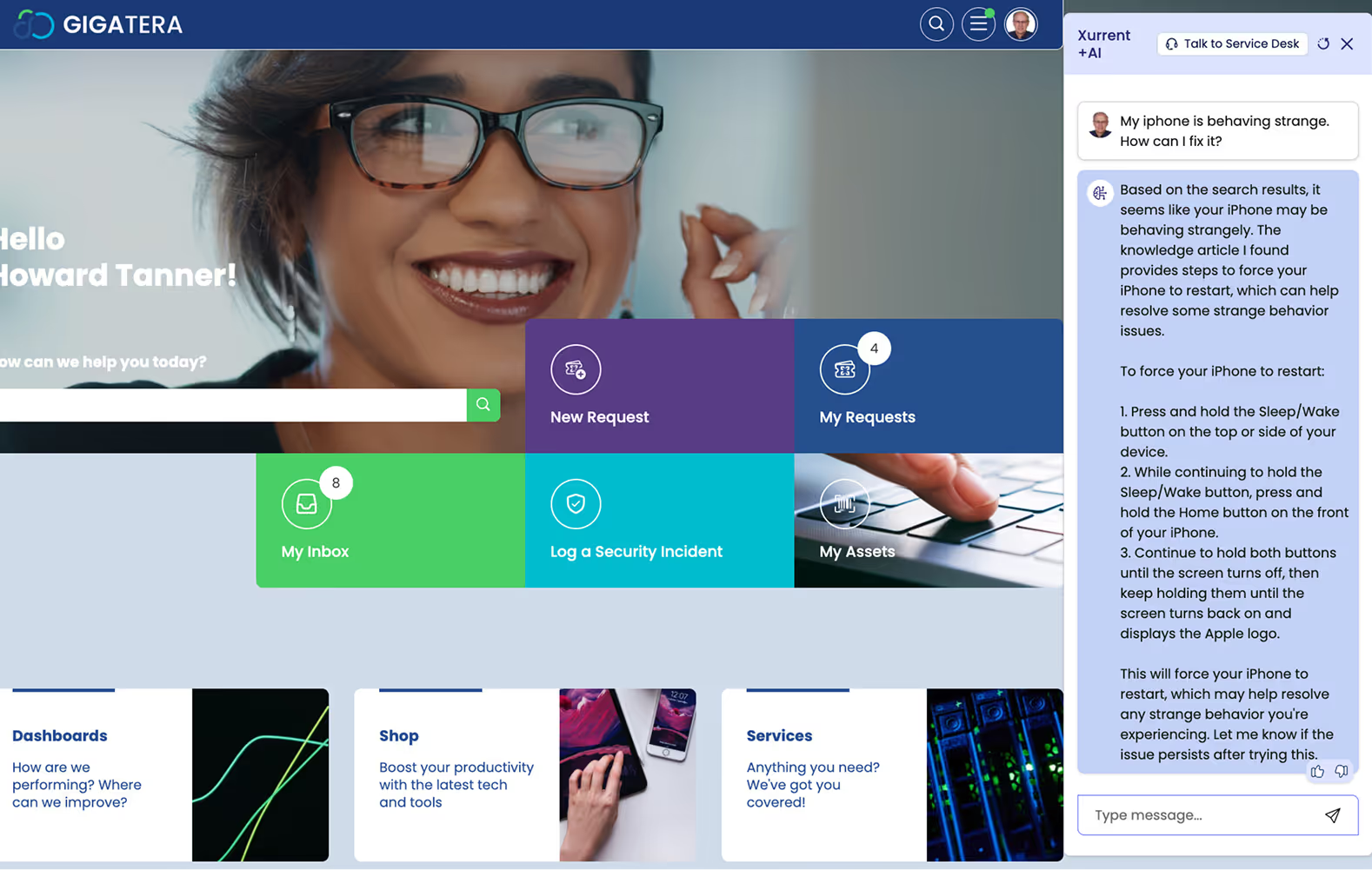
Strategy 2: Automation & intelligent triage
Organizations must replace manual steps with automation and route issues more efficiently with AI and machine learning. Bonus if they can generate knowledge articles automatically.
Xurrent answers:
1. AI Request Summaries that use generative AI to automatically summarize large request volumes once they hit set thresholds. With over 2,000 weekly summaries per customer on average, this drives significant productivity gains and reduces resource needs for growth support.
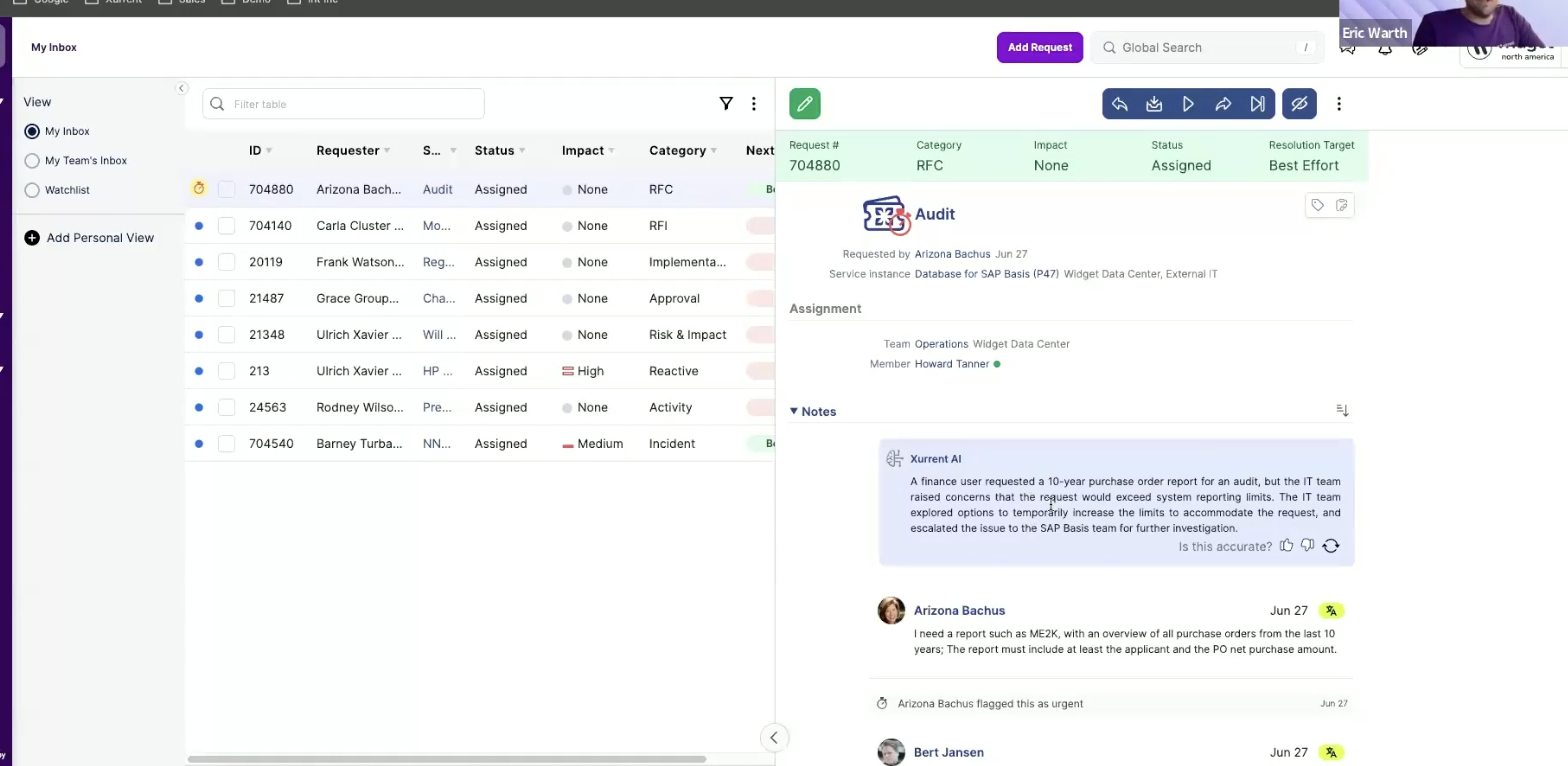
2. AI Auto-Classification that automatically categorizes all requests and explains its reasoning, enabling continuous accuracy improvements over time.
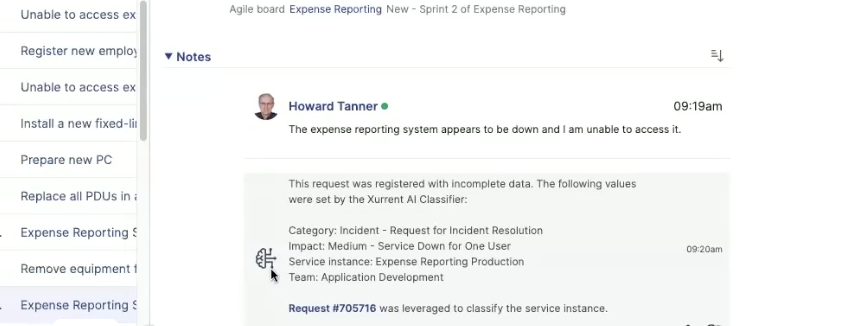
3. AI Knowledge Article creation and improvement that synthesizes all record notes, automatically suggesting subjects, descriptions, and instructions for more effective documentation.
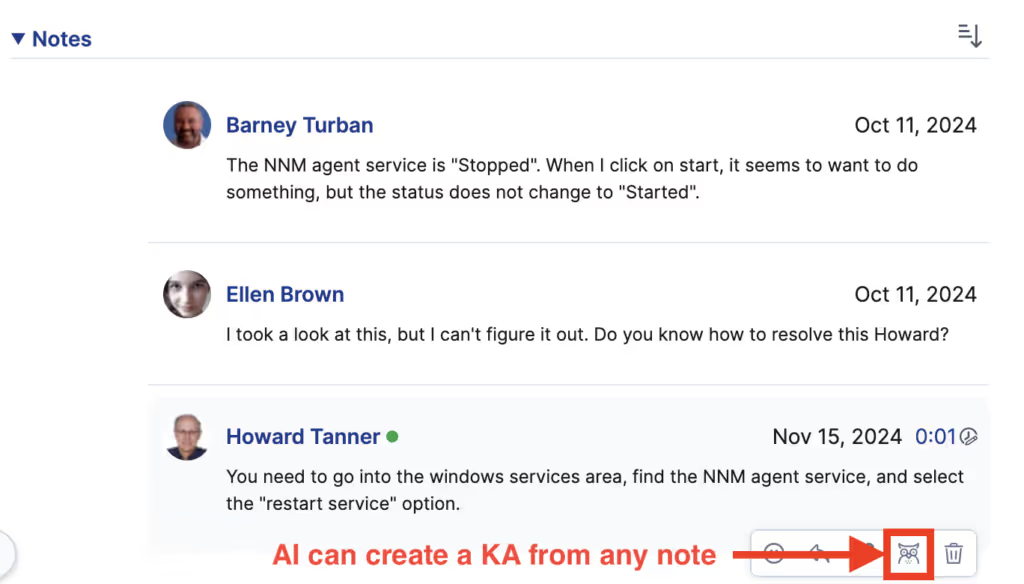
Strategy 3: Real-time collaboration across IT
It's time for organizations to break down silos across IT functions, thereby enabling faster resolution through shared context and reducing the frequency of repeat incidents.
The Xurrent answer: One example is our Zenduty integration with Slack and Teams.
When an incident occurs, communication often takes place across multiple platforms and channels — including text, Slack, Teams, email, and in-person meetings.
With Zenduty by Xurrent, teams can manage all incident communications without ever leaving their preferred communication platform. See: Slack integration below.
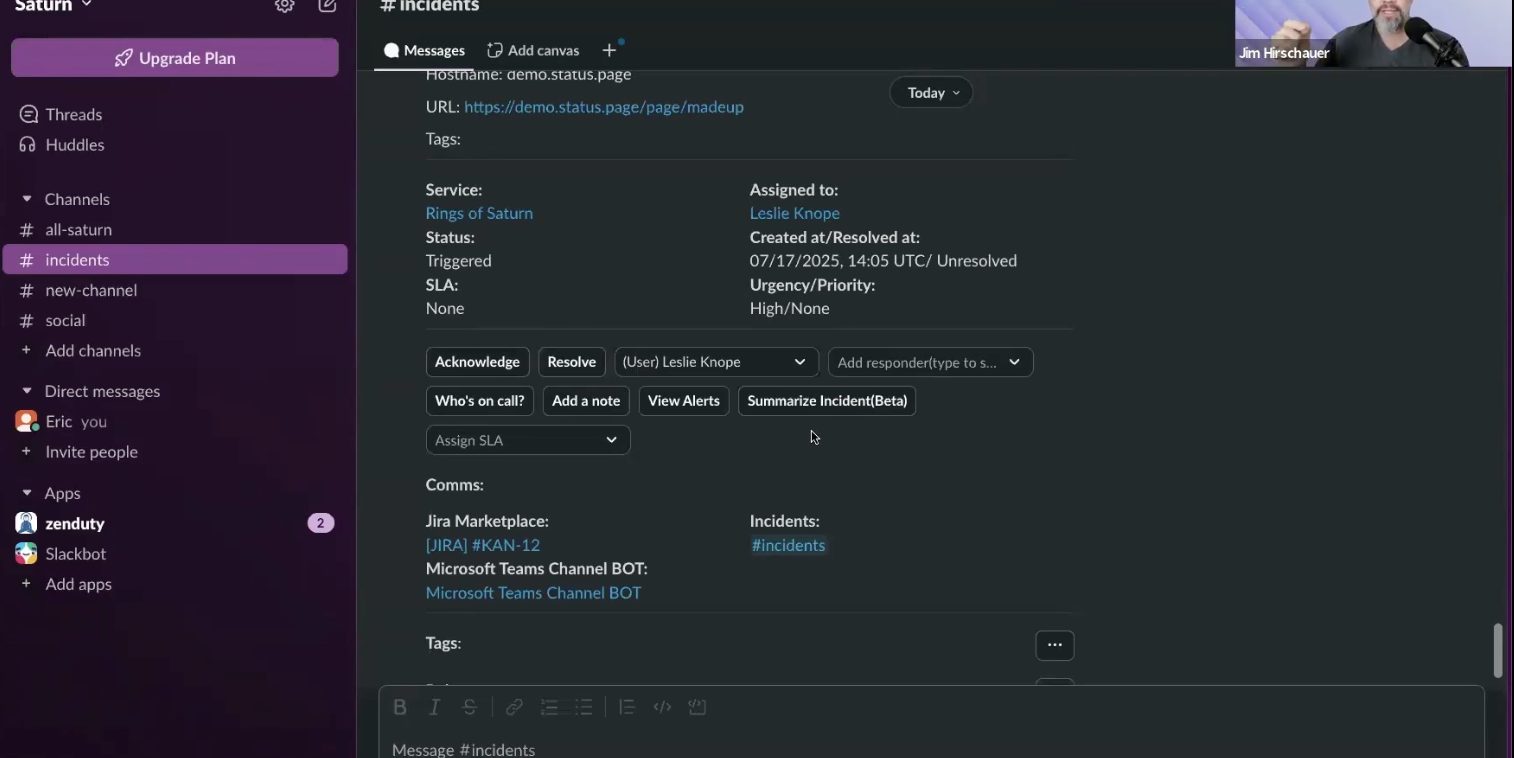
Even better, all integrations are fully customizable:

Strategy 4: Unified service data integration
Organizations that integrate data from across their IT systems create a single source of truth, reducing swivel-chairing and inefficient handoffs.
The Xurrent answer: Statuscast, which offers real-time updates with visually appealing, audience-specific status pages, powered by AI for intelligent incident messaging and automated content generation.
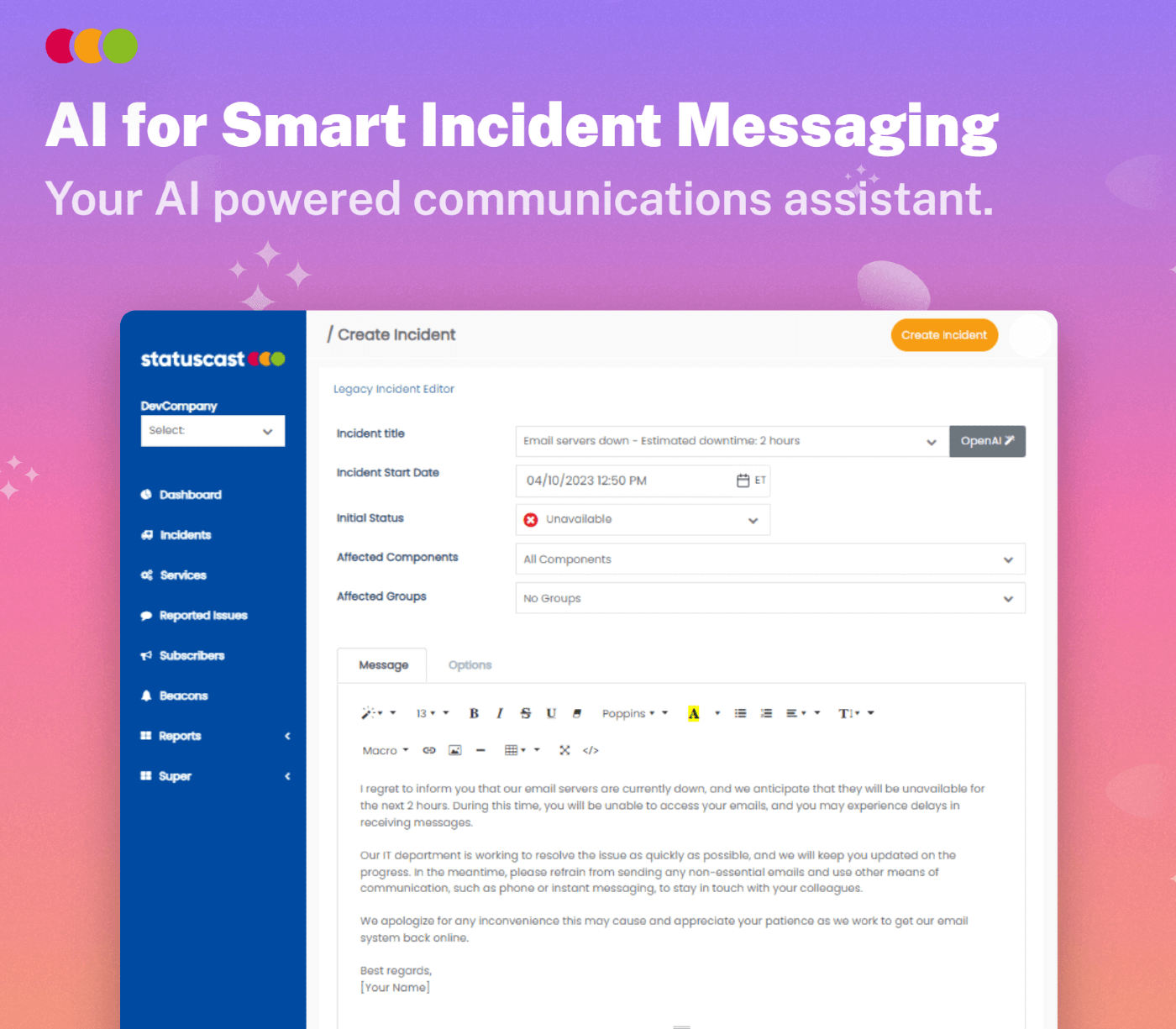
Statuscast turns reactive chaos into proactive communication.
What you get with a modern Service Desk, like Xurrent:
The stats don't lie.

And it's easy to get started. We recommend these three steps:
1. Auditing your current service desk capabilities
2. Identifying quick wins for automation & integration
3. Aligning IT support strategy with user journeys
Remember: a modern service desk isn't just an IT goal — it's critical to powering the modern digital enterprise.
Watch the full webinar to learn more about how Xurrent can help.
FAQs
1. What are the key signs that a traditional service desk model is falling short?
Traditional ticket-based service desk models fall short because user expectations are increasing, IT ecosystems are becoming more complex, and technology continues to advance at an exponential rate. These factors mean service desks must evolve to become proactive, experience-driven enablers of productivity rather than reactive bottlenecks.
2. What are the essential characteristics of a modern service desk?
A modern service desk must be proactive, intelligent, and integrated. It should function as a productivity enabler, not a bottleneck, and adopt an experience-first approach rather than a ticket-first mentality.
3. How can organizations deliver consumer-grade self-service experiences?
Organizations need to develop a simple, intuitive portal design that is personalized and includes AI-driven answers. This portal should generate tickets through an AI-assisted approach, providing users with instant, intelligent support through solutions like AI Virtual Agents that automate answers, streamline requests, and keep users informed in real time.
4. What role does automation play in modernizing service desk operations?
Organizations must replace manual steps with automation and route issues more efficiently using AI and machine learning. Modern service desks can automatically generate knowledge articles and utilize AI for request summaries, auto-classification, and knowledge article creation and improvement, driving significant productivity gains.
5. How do AI Request Summaries improve service desk efficiency?
AI Request Summaries use generative AI to automatically summarize large request volumes once they hit set thresholds. With over 2,000 weekly summaries per customer on average, this feature drives significant productivity gains and reduces resource needs for growth support.
6. What is AI Auto-Classification, and how does it benefit service desks?
AI Auto-Classification automatically categorizes all requests and provides an explanation of its reasoning, enabling continuous accuracy improvements over time. This eliminates manual categorization work and ensures consistent, intelligent routing of requests.
7. How can real-time collaboration across IT improve service desk performance?
Organizations need to break down silos across IT functions, enabling faster resolution through shared context and reducing the frequency of repeat incidents. Modern solutions allow teams to manage all incident communications without ever leaving their preferred communication platform, such as Slack or Teams.
8. What is unified service data integration, and why is it important?
Organizations that integrate data from across their IT systems create a single source of truth, reducing swivel-chairing and inefficient handoffs. This unified approach eliminates the need to switch between multiple systems, providing comprehensive visibility across all IT operations.
9. How do modern status pages improve incident communication?
Modern solutions offer real-time updates with visually appealing, audience-specific status pages, powered by AI for intelligent incident messaging and automated content generation. This approach transforms reactive chaos into proactive communication, keeping stakeholders automatically informed.
10. What are the recommended steps to modernize a service desk?
The three recommended steps are: first, auditing your current service desk capabilities; second, identifying quick wins for automation and integration; and third, aligning IT support strategy with user journeys. A modern service desk isn't just an IT goal — it's critical to powering the modern digital enterprise.
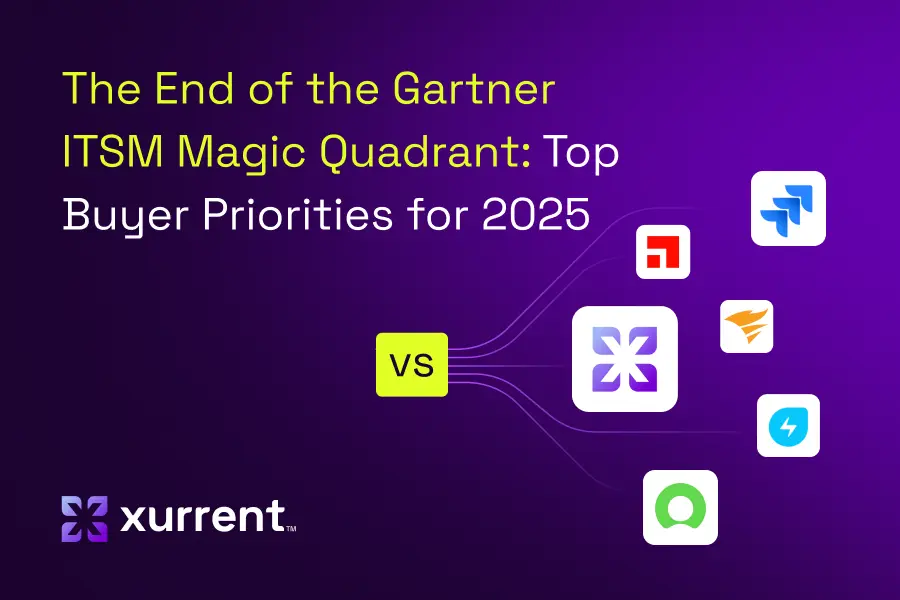

Xurrent named a Market Leader in Research In Action’s Vendor Selection Matrix™ for IT & Enterprise Service Management Solutions
Xurrent earns #1 rankings in customer satisfaction, price vs value, and recommendation index in Research In Action's global ITSM/ESM Vendor Selection Matrix report.


